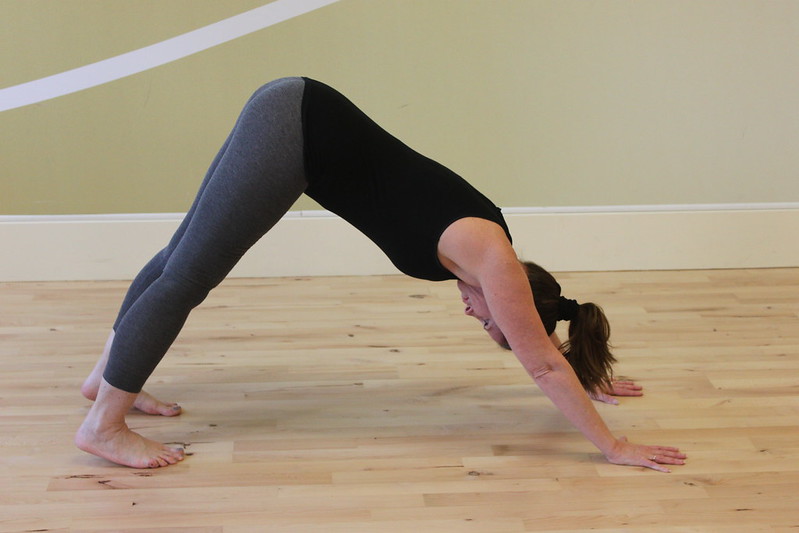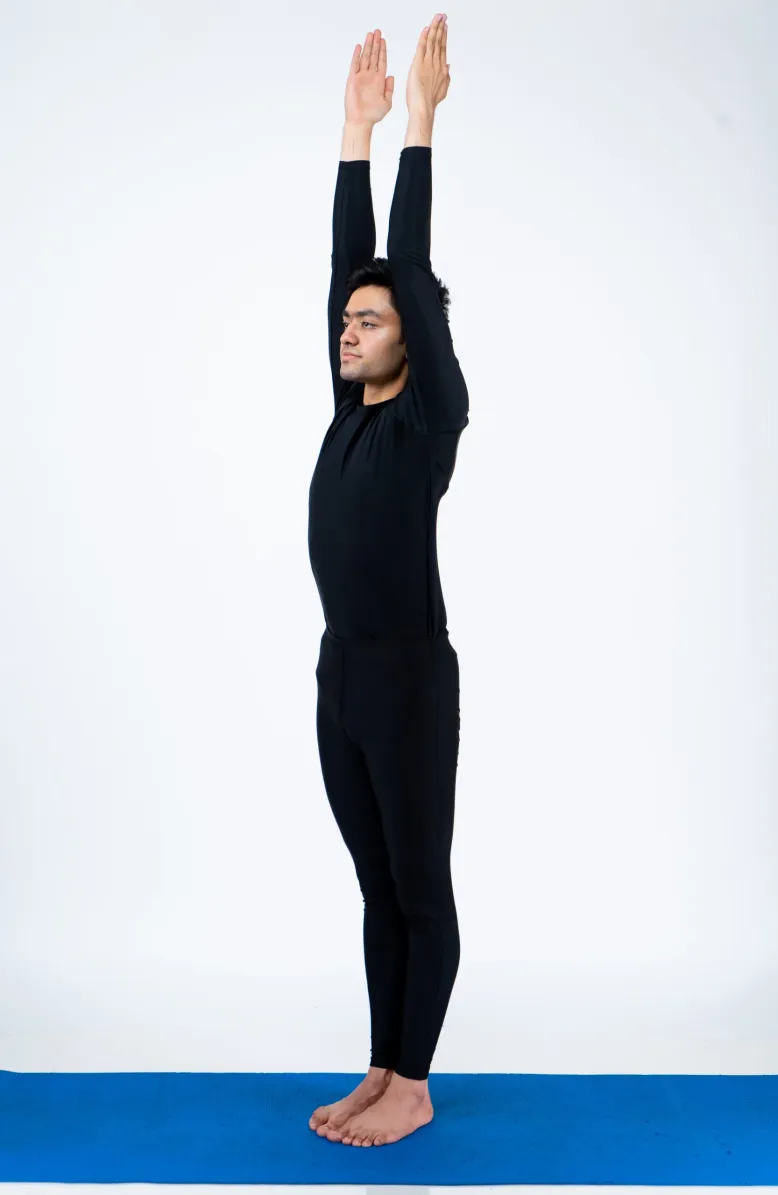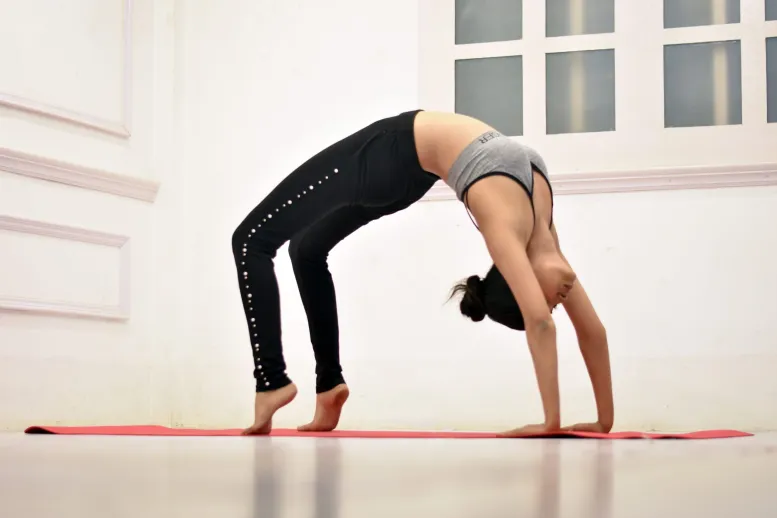In a world often obsessed with thinness, achieving a healthy weight can feel like a daunting task for many. But what if there was a practice that could help you build muscle, boost your metabolism, and cultivate a positive body image – all while connecting you with your inner strength? Enter yoga, a powerful tool for not just weight loss, but also for healthy weight gain.
Table of Contents
ToggleWhy Yoga for Weight Gain?
Traditional yoga, with its focus on mindful movement, breathwork, and meditation, offers unique benefits for weight gain seekers. Here’s how:
1. Stimulating Appetite:
Certain yoga poses, like Warrior II (shown below) and Triangle Pose, can stimulate the digestive organs and increase blood flow to the abdomen, potentially boosting appetite. Additionally, meditation techniques can help manage stress, a known appetite suppressant.

2. Building Muscle Mass:
Specific yoga sequences targeting major muscle groups like thighs, core, and back can build lean muscle mass. This, in turn, increases metabolism, leading to a more efficient caloric intake and weight gain.
3. Cultivating Body Positivity:
Yoga emphasizes self-acceptance and non-judgment. By focusing on mindful movement and connecting with your body, you can develop a more positive and empowered relationship with your physique, paving the way for healthy weight gain.
Yoga Poses for Weight Gain:
1. Warrior II (Virabhadrasana II):

Muscle Building: Warrior II engages major muscle groups like quads, glutes, hamstrings, core, and shoulders. Building muscle increases metabolic rate, helping you burn more calories at rest and promoting weight gain.
Appetite Stimulation: Challenging poses like Warrior II can stimulate your appetite, leading to increased calorie intake. This is particularly helpful if you struggle to eat enough for weight gain.
Improved Digestion: Yoga poses can improve digestion and nutrient absorption, which can be beneficial for weight gain.
Overall Fitness: Warrior II and other yoga poses improve your overall fitness, which can lead to better sleep, stress management, and overall well-being, all of which can support weight gain efforts.
Here are some tips to maximize Warrior II for weight gain:
- Hold the pose for longer durations: Aim for 30-60 seconds per side, gradually increasing the hold time as you get stronger.
- Focus on active engagement: Engage your muscles actively throughout the pose, pushing through your feet and actively extending your arms.
- Add variations: Try different leg positions (wider stance, elevated back foot), arm variations (holding weights, overhead), or pulsating movements.
- Combine with other weight-gain exercises: Strength training with free weights or bodyweight exercises will further stimulate muscle growth and weight gain.
- Fuel your body properly: Ensure you’re eating a calorie-surplus diet with adequate protein for muscle building and healthy fats and carbohydrates for energy.
2. Triangle Pose (Trikonasana):

Appetite Stimulation: Similar to Warrior II, holding Triangle Pose can activate and stimulate your digestive system, potentially leading to a naturally increased appetite. This can be helpful if you struggle to eat enough for weight gain.
Improved Circulation: The pose stretches and opens the chest, abdomen, and hips, which can improve blood circulation. This can enhance nutrient absorption and delivery to muscles, supporting muscle growth and weight gain.
Stress Reduction: Stress can hinder weight gain efforts by affecting appetite and hormonal balance. Triangle Pose, known for its calming and grounding effects, can help manage stress and create a more favorable environment for weight gain.
Mind-Muscle Connection: Focused engagement during the pose, especially in the core and legs, can improve mind-muscle connection and proprioception. This can lead to better muscle activation during other weight-gain exercises, potentially enhancing overall results.
Here are some tips to maximize Triangle Pose for weight gain:
- Hold the pose for longer durations: Aim for 30-60 seconds per side, gradually increasing the hold time as you get stronger.
- Focus on proper alignment and active engagement: Lengthen your spine, press your feet firmly into the ground, and engage your core and leg muscles throughout the pose.
- Incorporate variations: Try different foot positions (wider stance, one foot elevated), arm variations (holding weights, reaching overhead), or pulsating movements.
- Combine with other weight-gain exercises: Strength training with free weights or bodyweight exercises, especially targeting major muscle groups like legs and core, will directly contribute to muscle growth and weight gain.
- Fuel your body properly: Ensure you’re eating a calorie-surplus diet with adequate protein for muscle building and healthy fats and carbohydrates for energy.
3. Bridge Pose (Setu Bandhasana):

Muscle Building: Bridge Pose primarily targets the glutes, hamstrings, and core, key muscle groups for building mass. Holding the pose engages these muscles isometrically, leading to muscle growth and strength gains over time.
Increased Metabolism: Building muscle naturally increases your resting metabolic rate (RMR), the number of calories your body burns at rest. Higher RMR means more efficient calorie utilization, potentially aiding in weight gain.
Improved Posture and Alignment: Bridge Pose strengthens core and back muscles, leading to improved posture and alignment. This can create a more confident appearance and potentially boost your overall well-being.
Stimulates Digestion: The gentle compression on the abdominal organs in Bridge Pose can stimulate digestion and improve nutrient absorption. This can be beneficial for weight gain as it ensures your body utilizes nutrients efficiently for building muscle.
Mind-Body Connection: Bridge Pose encourages a mindful connection with your breath and body, promoting relaxation and reducing stress. Stress can negatively impact weight gain, so managing it is crucial.
Here are some tips to maximize Bridge Pose for weight gain:
- Hold for longer durations: Aim for 30-60 seconds, gradually increasing the hold time as you get stronger.
- Focus on active engagement: Squeeze your glutes and hamstrings, press your feet into the ground, and engage your core throughout the pose.
- Incorporate variations: Try single-leg bridge, elevated leg bridge, or pulsing movements.
- Combine with other weight-gain exercises: Pair Bridge Pose with strength training exercises for glutes, hamstrings, and core to further enhance muscle building.
- Fuel your body properly: Ensure you’re eating a calorie-surplus diet with adequate protein (0.8-1 gram per pound of body weight) for muscle building and healthy fats and carbohydrates for energy.
4. Downward-Facing Dog (Adho Mukha Svanasana):

Downward-Facing Dog, or Adho Mukha Svanasana, is a versatile yoga pose commonly found in sun salutations and Vinyasa flows. While it may not be the first pose that comes to mind for weight gain, it can offer some indirect benefits when incorporated into a broader plan:
Muscle Engagement: Downward-Facing Dog engages multiple muscle groups, including the core, shoulders, arms, legs, and glutes. Holding the pose isometrically challenges these muscles, potentially leading to increased strength and tone over time. Stronger muscles can contribute to a more muscular physique, supporting weight gain goals.
Increased Blood Flow: The inverted nature of Downward-Facing Dog promotes increased blood flow throughout the body, including the muscles. This improved circulation can deliver nutrients more efficiently to muscle tissue, potentially aiding in muscle growth and repair.
Improved Posture: Downward-Facing Dog stretches and strengthens the spine, core, and shoulders, leading to better posture. Good posture can enhance confidence and presence, contributing to a positive self-image and potentially motivating weight gain efforts.
Mind-Body Connection: Downward-Facing Dog encourages mindfulness and focus on the breath. This can help manage stress, which can negatively impact weight gain. Additionally, it can build a stronger mind-muscle connection, leading to better activation during other weight-gain exercises.
Here are some tips to maximize Downward-Facing Dog for weight gain:
- Hold for longer durations: Aim for 30-60 seconds, gradually increasing the hold time as you get stronger.
- Focus on proper alignment: Lengthen your spine, press your heels into the ground, engage your core, and draw your shoulders back and down.
- Incorporate variations: Try different leg positions (wider stance, one foot elevated), arm variations (holding weights, reaching overhead), or pulsating movements.
- Combine with other weight-gain exercises: Pair Downward-Facing Dog with strength training exercises targeting major muscle groups, especially legs, core, and shoulders, for direct muscle building.
- Fuel your body properly: Ensure you’re eating a calorie-surplus diet with adequate protein (0.8-1 gram per pound of body weight) for muscle building and healthy fats and carbohydrates for energy.
5. Child's Pose (Balasana):

Child’s Pose, or Balasana, is primarily a restorative yoga pose that offers numerous benefits for relaxation and stress reduction. While not directly designed for weight gain, it can indirectly contribute to your goals through certain aspects:
Stress Management: Studies suggest chronic stress can negatively impact appetite and metabolic function, hindering weight gain efforts. Child’s Pose, with its calming and grounding effects, can help manage stress and create a more favorable environment for weight gain.
Digestion: The gentle compression on the abdominal organs in Child’s Pose can stimulate digestion and improve nutrient absorption. This can ensure your body efficiently utilizes nutrients for building muscle and supporting weight gain.
Mind-Body Connection: Child’s Pose encourages mindful breathing and promotes a sense of inner calm. This mind-body connection can help manage stress and cravings, potentially leading to healthier food choices and better adherence to a weight-gain plan.
Rest and Recovery: Adequate rest and recovery are crucial for muscle growth and overall well-being. Child’s Pose can be a valuable tool for promoting relaxation and aiding in post-workout recovery, potentially optimizing your weight-gain efforts.
Here are some tips to maximize Child’s Pose for weight gain:
- Hold for longer durations: Aim for 5-10 minutes or longer, allowing your body to fully relax and reap the stress-management benefits.
- Focus on deep breathing: Deep, diaphragmatic breaths can further enhance relaxation and promote nutrient absorption.
- Incorporate variations: Try resting your forehead on different spots like the mat, blocks, or bolsters, or experiment with extended arms or gentle rocking motions.
- Combine with other weight-gain practices: Use Child’s Pose as part of your pre-workout routine for relaxation and focus, or as a restorative tool after weight-gain exercises.
- Maintain a calorie-surplus diet: Ensure you’re consuming enough calories and adequate protein to support muscle building and weight gain alongside your yoga practice.
Additional Practices for Weight Gain:
1. Pranayama: Deep breathing exercises like Kapalabhati can stimulate the digestive system and increase energy levels.
2. Visualization: Visualizing your body reaching its healthy weight can positively influence your mindset and support your goals.
3. Mindful Eating: Pay attention to hunger cues and savor each bite to avoid overeating or undereating.
4. Strength Training: Combine yoga with weight training or resistance bands to further build muscle and promote weight gain.
Important Considerations:
- Listen to your body: Choose poses that feel comfortable and avoid pushing yourself too hard.
- Consult a doctor: If you have any underlying health conditions, talk to your doctor before starting any new exercise program.
- Focus on progress, not perfection: Celebrate small wins and be patient with your progress. Weight gain takes time and consistency.
- Seek support: Find a yoga teacher or community that understands your goals and can provide guidance and encouragement.
Embrace the Journey:
Yoga for weight gain is not about conforming to unrealistic beauty standards. It’s about building a strong, healthy, and confident body while fostering a positive and empowered relationship with yourself. By incorporating these practices into your routine, you can unlock your body’s potential for healthy weight gain and embark on a transformative journey of self-acceptance and well-being.
Remember:
- Listen to your body and adjust your practice accordingly.
- Celebrate your progress, no matter how small.
- Seek support and build a community around your goals.
- Embrace the transformative power of yoga and enjoy the process of becoming your strongest, healthiest self.





No Comments